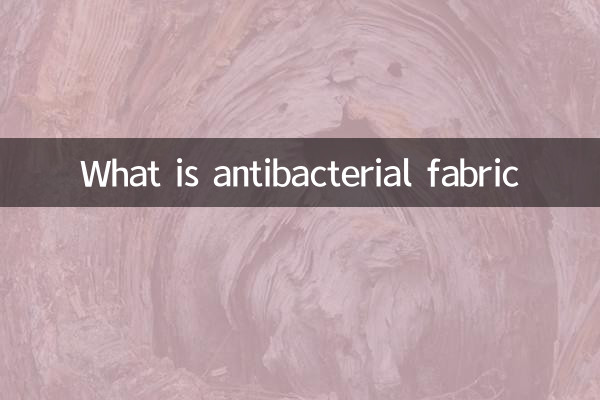What is antibacterial fabric?
With the increase in health awareness, antibacterial fabrics have become a hot topic in recent years. Especially after the epidemic, consumer demand for textiles with antibacterial functions has surged. This article will give you a comprehensive analysis of antibacterial fabrics from the aspects of definition, principles, application scenarios and market data based on the hot content on the entire Internet in the past 10 days.
1. Definition and principle of antibacterial fabrics

Antibacterial fabric is a functional textile that can inhibit or kill bacteria, fungi and other microorganisms through special treatment or addition of antibacterial agents. Its core principles are divided into three categories:
| type | principle | Common materials |
|---|---|---|
| Physical antibacterial | Disruption of microbial cell membranes through fiber surface structures | Nano silver, zinc oxide |
| chemical antibacterial | Release reactive ions to interfere with microbial metabolism | Quaternary ammonium salts, chlorhexidine |
| biological antibacterial | Utilize natural antibacterial ingredients (such as chitosan) | Bamboo fiber, chitin |
2. Recent hot application scenarios
According to social media and e-commerce platform data in the past 10 days, antibacterial fabrics are mainly used in the following fields:
| Application areas | Popular products | Attention growth rate (compared to last month) |
|---|---|---|
| Maternity and baby products | Antibacterial baby clothes and diapers | +68% |
| sportswear | Antibacterial yoga pants, sports socks | +42% |
| medical protection | Antibacterial masks, surgical gowns | +35% |
| Home textiles | Antibacterial bedding and towels | +57% |
3. Antibacterial effect testing standards
According to national standards, the effectiveness of antibacterial fabrics is mainly measured by the following indicators:
| Test items | Standard requirements | Test strains |
|---|---|---|
| Antibacterial rate | ≥70% (Grade A) | Staphylococcus aureus |
| Inhibition zone diameter | ≥1mm | E. coli |
| Durability of washing | ≥50 times (maintain effect) | Candida albicans |
4. Market trends and consumer concerns
Recent e-commerce big data shows (statistical period: October 1-10, 2023):
| consumer demands | Proportion | Popular brands |
|---|---|---|
| Safe and non-irritating | 43% | All-cotton era |
| Long lasting antibacterial | 32% | Jiaouchi |
| Breathable and comfortable | 25% | Ubras |
5. Precautions for use
1. Avoid mixing with strong acid and alkali detergents, which may destroy the antibacterial ingredients.
2. It is recommended that the water temperature does not exceed 40°C to prevent changes in fiber structure.
3. People with sensitive skin should conduct a skin test first.
4. Look for national standard certifications such as GB/T 20944.3-2008
Conclusion
As a representative of functional textiles, antibacterial fabrics are rapidly penetrating from the medical field into daily life. With the advancement of technology, more new materials with both efficient antibacterial and environmentally friendly properties may appear in the future. When consumers are purchasing, it is recommended to focus on the test report and actual usage scenario requirements.

check the details

check the details